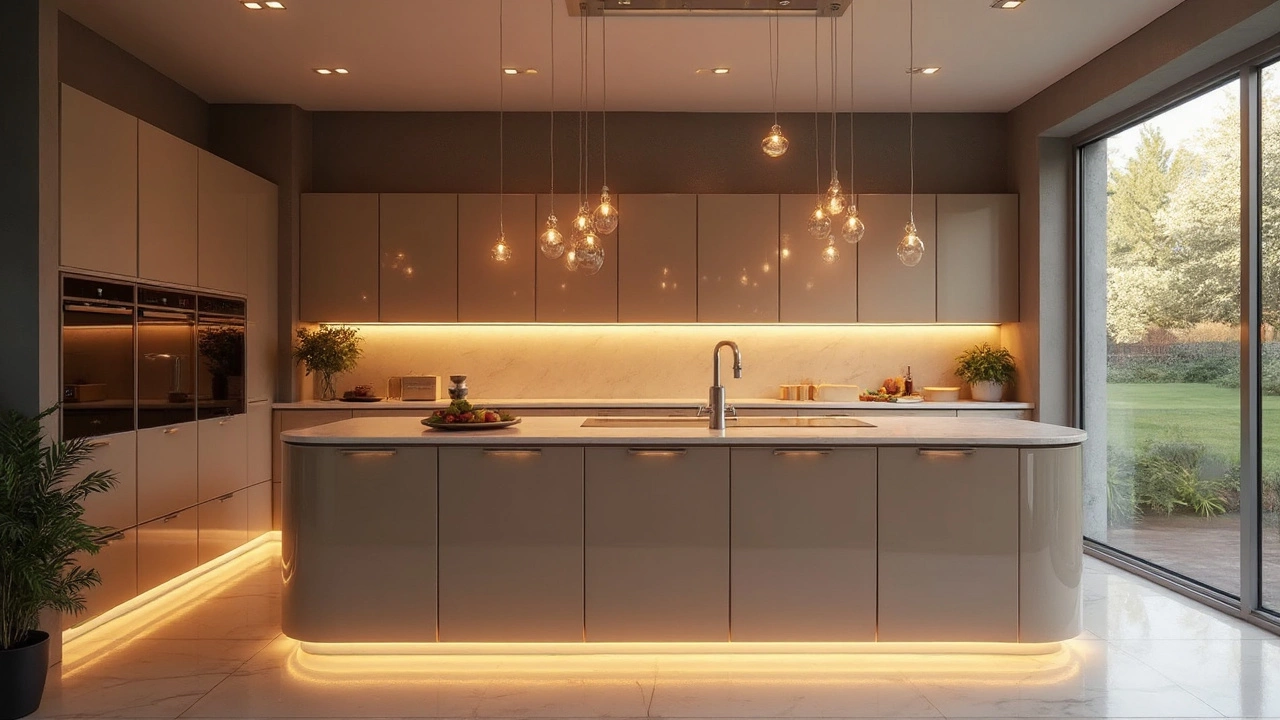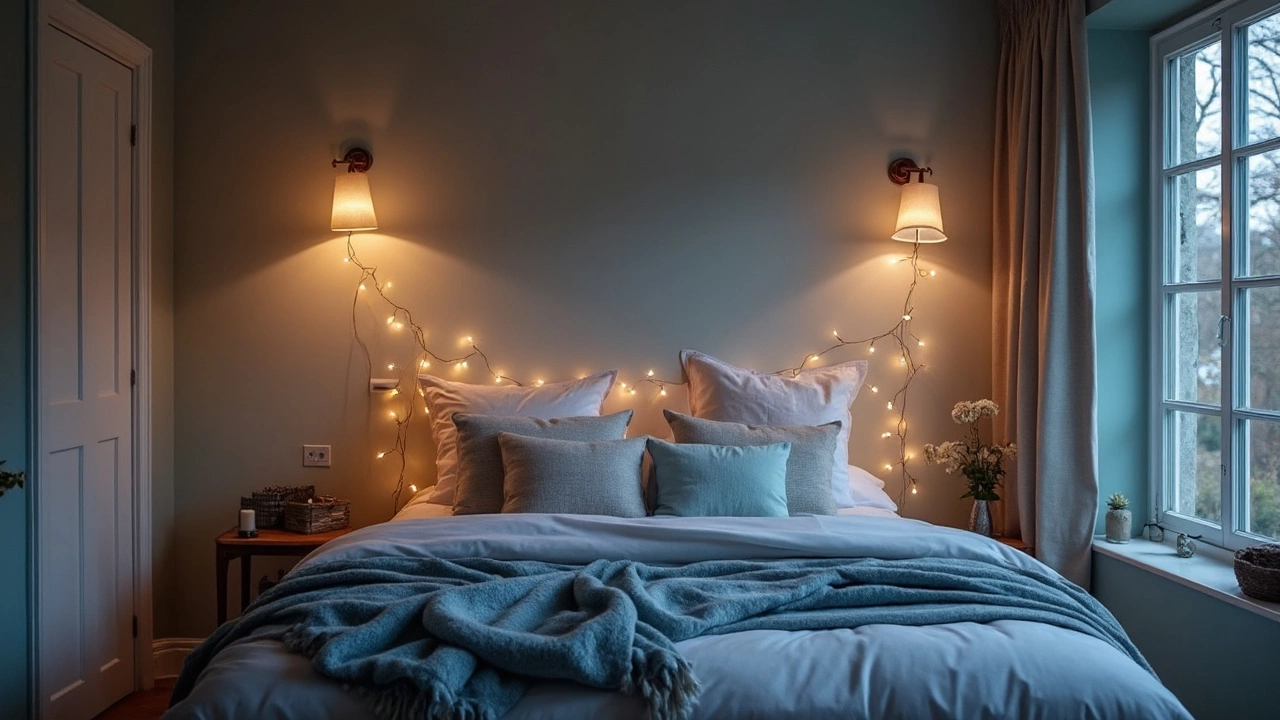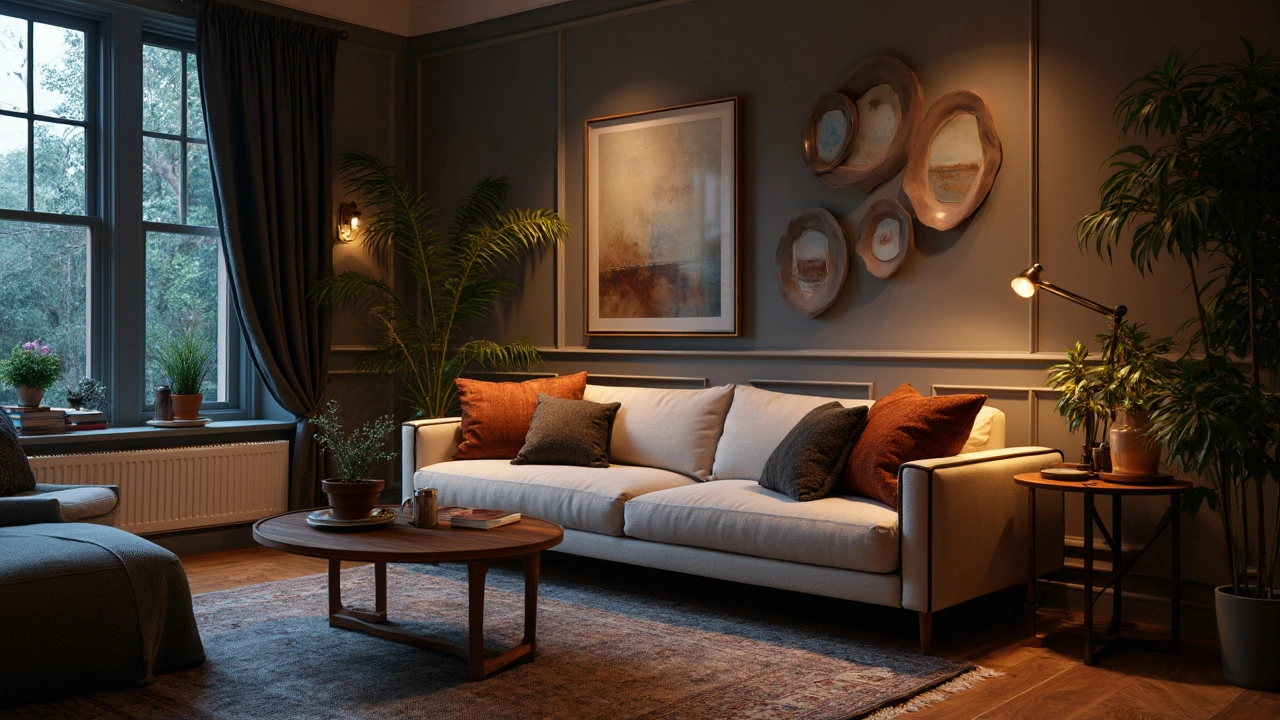You know when you walk into a room and it just feels inviting? That’s good lighting at work. The right lights don’t just help you see; they actually shape the vibe of your whole space. If you’re trying to figure out what lighting is going to make your home look its absolute best, you’re not alone. So many of us settle for whatever bulbs came with the house, but a few smart tweaks can upgrade your whole setup.
Start with this simple truth: lighting can make your skin and surroundings look awesome or, honestly, kind of harsh. For example, ever notice how some restaurants feel cozy while others blast you with light that basically screams cafeteria? That’s the power of color temperature and placement, and it matters way more than you’d think.
It’s not just about slapping a new lamp in the corner. The way you layer different lights and pick your bulbs changes the whole look. Want your living room to look like a high-end Airbnb? It’s probably not about buying expensive furniture—it’s about adjusting your lighting to highlight the best parts of the room and make it feel balanced.
- Why Attractive Lighting Matters
- The Power of Color Temperature
- Placement and Layering Tricks
- Bulb Choices That Make a Difference
- Small Changes, Big Impact
Why Attractive Lighting Matters
If you’ve ever wondered why your home never looks as inviting as those spaces you see in magazines or Instagram, it comes down to home lighting. The most attractive lighting instantly changes how you and your guests feel in a space. Good lighting can make a cluttered room look neat or turn a boring space into a favorite hangout.
Here’s the thing: lighting doesn’t just help you see better—it helps you feel better, too. According to a study by the Lighting Research Center, people are more comfortable and rated homes as "more attractive" when they had a mix of lighting sources, like ceiling, table, and floor lamps used together. That’s your first tip: layering makes a real difference in atmosphere.
There’s also a practical side. The right lights help you avoid eye strain, make tasks like reading way easier, and can even make colors on your walls or furniture pop. Plus, certain best lighting choices, like LED bulbs, save you money in the long run and are easier on the environment.
| Lighting Impact | Study/Fact |
|---|---|
| Layered Lighting | Improves perceived comfort and aesthetic appeal (Lighting Research Center, 2021) |
| High CRI Bulbs | Reveal colors more accurately—especially on art and textiles |
| Soft Lighting | Low color temperature enhances feelings of relaxation (Harvard Study, 2020) |
When you hear people talk about interior lighting making a space “look expensive,” it’s usually because there’s thought put into the direction, warmth, and brightness of the lights. You can easily experiment in your own home with a few lamps, smart bulbs, or even by switching out old harsh bulbs for something softer.
The bottom line: if you want your home to rock both in looks and mood, nailing your lighting setup isn’t optional. It’s actually a game-changer for the whole space.
The Power of Color Temperature
Color temperature sounds technical, but it basically means how "warm" or "cool" your light looks. In the world of home lighting, this makes a huge difference in how a room feels.
Here's what you really need to know: standard light bulbs are rated on a Kelvin scale. Lower numbers (like 2700K) are warmer and more yellow, which feels cozy—think your favorite coffee shop. Higher numbers (around 4000K to 6500K) give you cooler, bluer light that feels fresh and energizing, similar to daylight.
| Color Temperature | Appearance | Common Uses |
|---|---|---|
| 2700K-3000K | Warm, yellow | Bedrooms, living rooms |
| 3500K-4100K | Neutral white | Kitchens, bathrooms |
| 5000K-6500K | Cool, daylight | Garages, work spaces |
If you want a room to look more attractive, match the color temperature to what people do there. Warm light usually flatters people and spaces, making it perfect for relaxing areas like living rooms and bedrooms. Cool light sharpens details and boosts alertness, so it’s good for task-heavy spots like the kitchen or an office.
It's easy to mix things up, though. Using a super cool bulb in your living space can make everything look kinda sterile—and nobody looks good in lighting meant for a warehouse. At the same time, putting a yellow bulb above your bathroom mirror often gives you a fake tan vibe that's just not helpful.
If you're not sure what to buy, check bulb packaging for the actual Kelvin number. Some new LED bulbs are adjustable so you can dial in your own look, which is handy if your home lighting needs change a lot during the day.
- For interior lighting in most homes, 2700K to 3000K is safe and flattering.
- If you need to stay alert, like in a home office, 4000K kicks up your focus.
- Mixing color temperatures in the same space usually looks odd, so pick one vibe per room.
Understanding this one setting can make your home look more stylish—without buying anything expensive. Just swap a bulb and see your space in a new light.

Placement and Layering Tricks
The secret sauce to attractive lighting at home is all about mixing and matching. Seriously, don't rely on just one harsh ceiling light. Spaces always look better when you use more than one light source at different heights—think ceiling, table lamps, floor lamps, and wall sconces. This lets you control the mood and avoid shadows that can make rooms look flat or uninviting.
Designers call it "layered lighting," and it usually means mixing three types:
- Ambient lighting: This is your main source—usually ceiling or overhead lights for general brightness.
- Task lighting: Think desk lamps or under-cabinet strips. These help you focus where you need it, like reading or cooking.
- Accent lighting: Spotlights, LED strips, or even string lights draw attention to features like art, shelves, or plants.
If you want a living room that feels put together, use all three layers. For example, a ceiling fixture with a dimmer, a floor lamp by the couch, and a couple of table lamps near reading spots is a game-changer. In bedrooms, wall sconces free up space on the nightstand and create a softer, more relaxed light.
Placement matters more than you might think. If you put lights right above your head or behind you while working, you get harsh shadows—nobody looks good under those. Instead, aim lights so they bounce off walls for a glow that's way more flattering. In the kitchen, use under-cabinet lighting to brighten counters. In living rooms, try placing lamps in corners to make the space feel bigger.
Here's a quick breakdown comparing the effect of common home lighting placements:
| Placement | Effect on Room |
|---|---|
| Center ceiling light | Even brightness, but can look flat and uninviting |
| Lamps in corners | Makes space feel bigger, adds depth |
| Accent lights on walls | Highlights features, adds interest |
| Under-cabinet in kitchen | Focused, shadow-free prep space |
Little changes matter. If a room feels dull, move a lamp across the room or swap a table lamp for a floor lamp. Don’t be afraid to test different setups. Nobody gets their home lighting perfect on the first try—but once you hit on the right mix, you’ll see the difference immediately.
Bulb Choices That Make a Difference
Pick the right bulb, and your space instantly looks better. Mess it up, and you’ll be squinting or cringing every time you flip the switch. When it comes to home lighting, not all bulbs are created equal, so let's get straight to what matters.
First up: LED bulbs. Skip anything else if you want energy savings and the best range of light color options. These bulbs last way longer (sometimes up to 20 years) and use about 75% less energy than old incandescent bulbs. CFLs are still out there, but they're old news—LEDs have better color and no annoying warm-up time.
Color temperature matters more than most people realize. If you want rooms to feel calm and natural, look for bulbs with a "warm white" color temperature—typically between 2700K and 3000K. Want a bright, energizing vibe? Go for "cool white" (4000K–5000K), but keep it to kitchens or work spaces where you actually want to be alert.
Lumens, not watts, tell you how bright the light is these days. For bedrooms and living rooms, stick with 800–1100 lumens per bulb (about a standard 60w equivalent). For tasks and kitchens, bump it up to 1100–1600 lumens. That keeps things inviting, not washed out or too dim.
| Type | Average Lifespan | Energy Used | Color Options |
|---|---|---|---|
| LED | 15,000–25,000 hrs | 10–15 watts | Warm to Cool |
| Incandescent | 1,000 hrs | 60 watts | Mostly Warm |
Don’t ignore color rendering index (CRI). A CRI of 80 or above means colors look closer to how they do in daylight. If you care about true colors—like in a bathroom or next to art—grab bulbs with a CRI of 90 or higher.
- Use “soft white” LEDs (2700K) in bedrooms for cozy, flattering home lighting.
- For kitchens and bathrooms, pick LEDs around 4000K for cleaner and more focused light.
- Smart bulbs let you adjust color and brightness from your phone, perfect for changing up the vibe with zero effort.
Paying attention to the type, color, and brightness of your attractive lighting bulbs isn’t a tiny detail—it changes the whole feeling of your space. Swapping a few bulbs might just be the most noticeable fix you can make around the house.

Small Changes, Big Impact
You don’t need to gut your house or blow your budget to get more attractive lighting. Sometimes simple swaps do the most. Swapping out harsh old bulbs for LED options with warmer color temps is a quick win. Most designers swear by bulbs labeled between 2700K (very warm) and 3000K (warm white)—these are known for making people and rooms look friendlier and more comfortable.
One trick that pays off right away: add dimmers to your main living areas. You can literally control the mood with the push of a button. In a recent survey, about 68% of homeowners said they felt their space instantly looked more stylish after installing dimmer switches. They’re not expensive, and you don’t have to be an electrician to pop one in.
If your ceiling lights are your main source of light all day, that’s probably not working in your favor. Floor lamps and table lamps can add depth and soften shadows. Try putting a lamp behind a chair or in a corner that feels gloomy. Instant upgrade.
Another easy win: replace those old, yellowed lampshades. Go for white or light beige to help spread light without making it look dingy. If your bulbs are showing above the rim of your shade, switch for a more covered option—that helps distribute the light evenly.
- Swap in warm white LED bulbs (2700K–3000K)
- Install dimmer switches for flexible lighting levels
- Add lamps to brighten dark corners
- Update lampshades to fresh, light colors
- Use smart bulbs for quick color and brightness control via app
If you want to see the impact in numbers, check out this comparison:
| Lighting Change | Estimated Cost | Perceived Room Warmth (User Rated, 1-10) |
|---|---|---|
| Old bulbs | $0 | 4 |
| Switch to warm LED | $15 | 8 |
| Add dimmer | $20 | 9 |
| Update lampshade | $12 | 7 |
It really doesn’t take much. Even one or two easy tweaks can make your home lighting look way more appealing—and make you actually want to spend time there.
